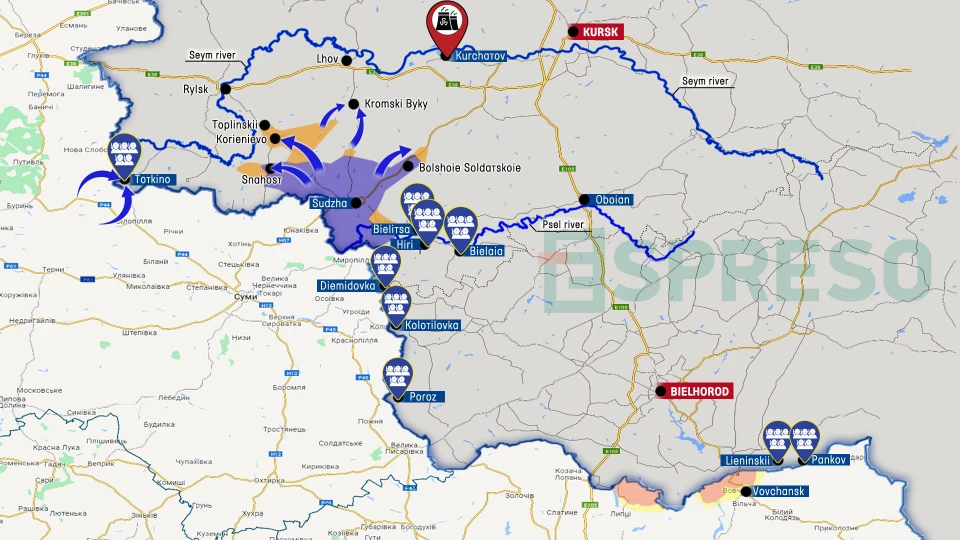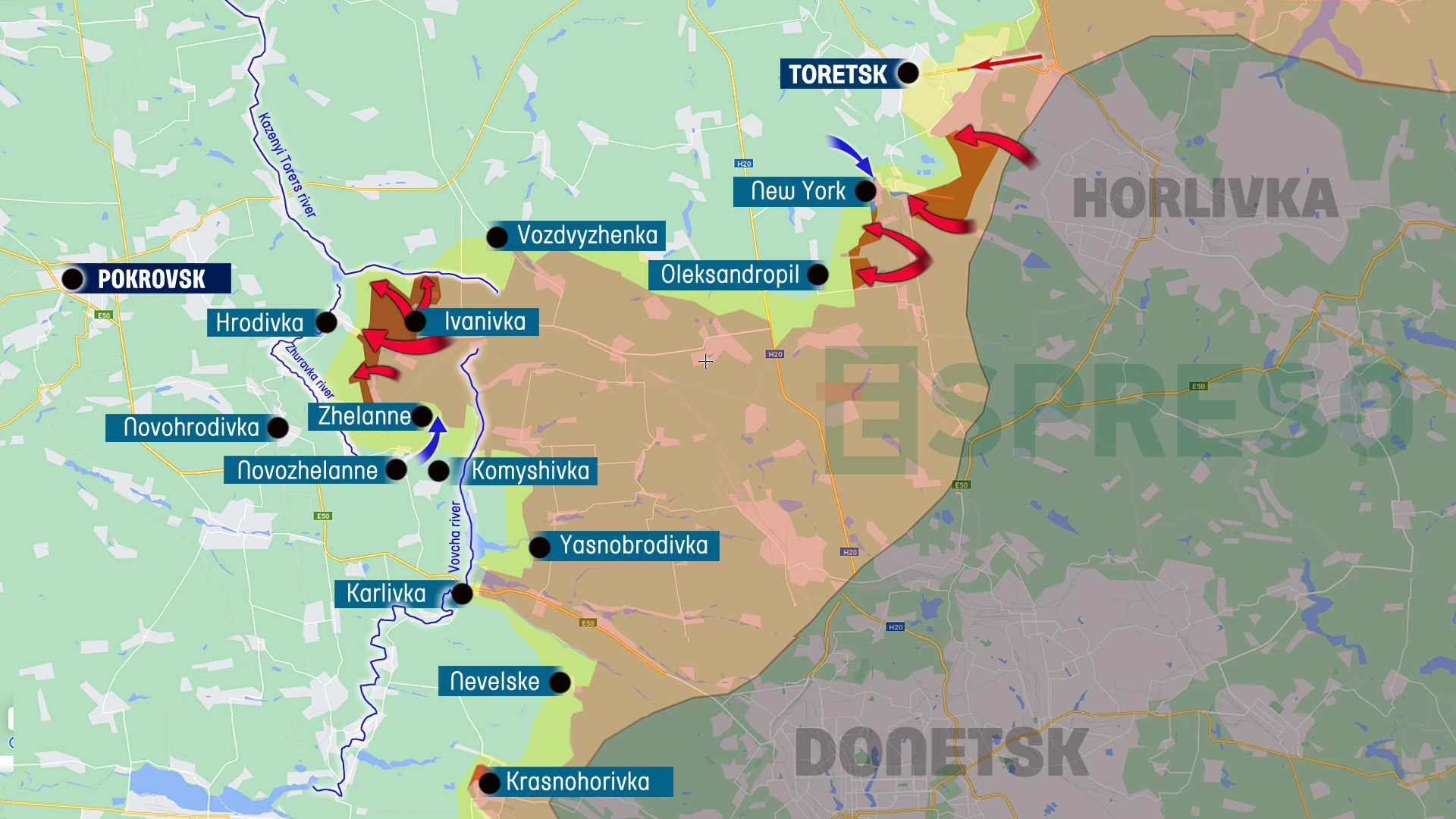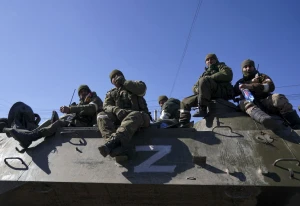
Latest events in Kursk region may affect further course of Ukrainian army's offensive. Serhiy Zgurets’ column
On August 19, reports confirmed that the Ukrainian Defense Forces disabled the third and final major bridge over the Seim River in the Glushkovsky district of Russia's Kursk region with airstrikes
Kursk operation
I'll begin with a piece of news that could significantly impact the ongoing offensive operation being conducted by the Ukrainian Armed Forces in Russia's Kursk region. It was reported that the third and final major bridge over the Seim River in the Glushkovsky district of the Kursk region was disabled by Ukrainian Defense Forces using aerial strikes. This leaves most of the Glushkovsky district, particularly the area between the Ukrainian border and the recently liberated territory in the Kursk region up to the Seim River, nearly cut off. Only two pontoon crossings remain, but likely not for long.

To the east, this area is being blocked by Ukrainian units operating in the Korenevsky district, where they now control the settlement of Korenevo. Russia now faces a choice: either continue to hold this section of the front with the risks associated with relying on pontoon supplies or withdraw from the entire area, which spans almost 700 square kilometers in addition to the 1,200 square kilometers already under the Ukrainian troops’ control in the Kursk region. This marks one of the key stages in this shock operation for Russia, which has been ongoing since August 6.
Incidentally, on August 19, the influential British publication The Economist released an article detailing new and intriguing information about the Ukrainian Defense Forces' preparations for the offensive in the Kursk region. The report states that Commander-in-Chief Oleksandr Syrskyi had developed several scenarios to strike the weakest points of the Russian defenses, aiming to seize the initiative with a swift and unexpected attack at a time when the enemy is pressing the Ukrainian defense in the east. Plans were also made for operations in the Bryansk region, in the Kursk region, a combined strike in both regions simultaneously, and possibly another direction.
It is noted that Syrskyi kept these plans secret, with only a small group of generals being aware of them. Discussions with Ukrainian President Zelenskyy were conducted face-to-face, even without Syrskyi's staff. Interestingly, most of the intelligence for planning the operation was obtained independently by military reconnaissance, with the Main Intelligence Directorate joining the process only at the final stage of preparation. According to The Economist, Syrskyi had two other large-scale operation plans. However, one of these plans became known to the Russians, and the other was canceled because Ukraine's partners advised against its execution. This is the reality of the situation.
According to a source cited by The Economist, the primary objective of the operation in the Kursk region is to divert Russia's efforts and resources away from other fronts, particularly the east, where Russian forces are slowly advancing against Ukrainian defenses. President Zelenskyy, as reported by The Economist, insists on maximum progress in the Kursk direction. However, Commander-in-Chief Syrskyi is more cautious, currently focusing on expanding the flanks along the border to establish more stable defensive lines.
When we talk about the flanks in the Kursk region, we refer to the western flank, specifically the Glushkovsky district with its blocked bridges, as well as the settlement of Korenevo, now controlled by the Ukrainian Armed Forces. Additionally, there is Rylsk, located further beyond Korenevo. From Rylsk, a highway leads to Lgov, Kurchatov, and Kursk, which is crucial for disrupting Russian logistics. Currently, Ukrainian FPV drones are operating along this route, destroying Russian trucks and equipment.
The eastern flank is equally significant, situated southeast of Sudzha. Fighting is ongoing in the settlements of Ozerka and Girya, located about 25 km east of Sudzha. Both Ukrainian and Russian forces are deploying assets in this area, which may indicate that more intense battles are expected there over time. This direction is crucial for two reasons: first, it secures Ukrainian forces advancing north towards Lgov and Kursk; second, this direction and flank pose a significant threat to the enemy’s supply routes to Belgorod and, subsequently, to Russian forces in northeastern Ukraine. This is the current situation.
Zelenskyy has mentioned the creation of a buffer zone, indicating that Ukrainian forces intend to establish a defensive line. However, the exact location of this defensive line remains uncertain. The situation remains fluid, while the enemy continues to attempt to wear down Ukrainian defenses with a creeping advance in the Avdiivka-Pokrovsk direction.
Pokrovsk direction
Over the past day, there have been 45 combat clashes in the Pokrovsk direction out of 145 across the entire front line. This indicates that this direction remains a priority for Russian forces. Currently, the enemy is focusing on heavily fortified cities like Novohrodivka and Selydove and is engaged in battles for Hrodivka.
Roman Buhaiev, a senior officer with the 47th Brigade operating in the Pokrovsk direction, reported that the enemy's activity remains intense, with ongoing attempts to advance towards Pokrovsk and Myrnohrad.

The Russian army is employing a creeping tactic, attempting to break through Ukrainian defenses with constant "meat grinder" assaults. They are not using large concentrations of equipment in this area because Ukrainian forces are quick to target and neutralize it. However, enemy infantry can advance more stealthily. As you can see, with this gradual advance, the invaders have reached new positions where some tree lines have survived, allowing them to gather and launch further assaults under cover. Therefore, our primary task now is to detect the enemy's movements as early as possible, after which all available resources from our brigade and neighboring units are deployed. The enemy's onslaught is relentless, creating a "meat grinder" where Ukrainian defenders aim to eliminate as much of the enemy's strength as possible.
The officer noted that the Russians are now reducing the number of personnel in their assault groups. For instance, an assault may involve as few as five soldiers, but despite this, the 47th Brigade's rocket artillery battery remains active and continues its work. The use of multiple launch rocket systems against the enemy depends on whether other units can also engage. The situation with supplies remains challenging, with ammunition shortages compared to the intensity of the assaults. Consequently, the use of MLRS is always effective not only for inflicting damage but also for exerting psychological pressure. When the enemy feels this pressure, their willingness to advance decreases.
Buhaiev added that, unfortunately, the Russian Lancet drones are highly effective weapons that are difficult to jam with electronic warfare. In this regard, the enemy has had success. When deploying in open terrain, the soldiers operating the MLRS must constantly monitor the sky and remain vigilant. The most important factor in preserving personnel, and then equipment, is the speed of response when targeting. In the Zaporizhzhia direction, there was a moment when they witnessed the operation of a Lancet firsthand, but thankfully, the soldiers survived, and the equipment remained intact. Therefore, the only defense is vigilance and rapid calculation.
The serviceman also mentioned that recruits are working within the brigade, so civilians can reach out to them. The recruits explain what future servicemen will be doing, giving them an understanding of what lies ahead. If civilians wish to join the ranks of the Ukrainian Armed Forces, they are welcome.
- News












































